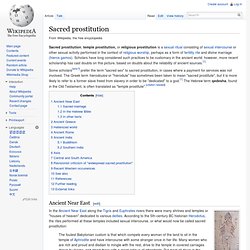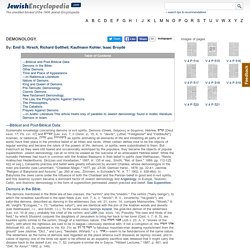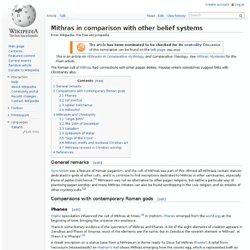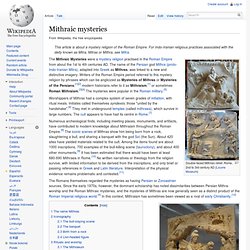

Sacred prostitution. Sacred prostitution, temple prostitution, or religious prostitution is a sexual ritual consisting of sexual intercourse or other sexual activity performed in the context of religious worship, perhaps as a form of fertility rite and divine marriage (hieros gamos).

Scholars have long considered such practices to be customary in the ancient world; however, more recent scholarship has cast doubts on this picture, based on doubts about the reliability of ancient sources.[1] Some scholars[who?] Prefer the term "sacred sex" to sacred prostitution, in cases where a payment for services was not involved. The Greek term hierodoulos or "hierodule" has sometimes been taken to mean "sacred prostitute", but it is more likely to refer to a former slave freed from slavery in order to be "dedicated" to a god.[1] The Hebrew term qedesha, found in the Old Testament, is often translated as "temple prostitute".
[citation needed] AZAZEL. The name of a supernatural being mentioned in connection with the ritual of the Day of Atonement (Lev. xvi.).

After Satan, for whom he was in some degree a preparation, Azazel enjoys the distinction of being the most mysterious extrahuman character in sacred literature. Unlike other Hebrew proper names, the name itself is obscure. —Biblical Data: In Lev. xvi. the single allusion to Azazel is as follows: On the tenth day of Tishri ( see Atonement Day ) the high priest, after first performing the prescribed sacrifices for himself and his family, presented the victims for the sins of the people. These were a ram for a burnt offering, and two young goats for a sin-offering. —In Biblical, Apocryphal, and Rabbinical Literature: The Rabbis, interpreting "Azazel" as "Azaz" (rugged), and "el" (strong), refer it to the rugged and rough mountain cliff from which the goat was cast down (Yoma 67 b ; Sifra, Aḥare, ii. 2; Targ.
Azazel Personification of Impurity. DEMONOLOGY. —Biblical and Post-Biblical Data: Systematic knowledge concerning demons or evil spirits.

Demons (Greek, δαίμονες or δαιμόνια; Hebrew, [Deut. xxxii. 17; Ps. cvi. 37] and [Lev. xvii. 7; II Chron. xi. 15; A. V. Chronography of 354. The title page and Dedication from the Barberini MS.

The texts read: "Valentinus, may you flourish in God" (top), "Furius Dionysius Filocalus illustrated this work" (in triangles), "Valentinus, enjoy reading this" (main in placard), on the left "Valentinus, may you live long and flourish", on the right "Valentinus, may you live long and rejoice". The Chronography of 354, also known as the Calendar of 354, was a 4th-century illuminated manuscript, which was produced in 354 AD for a wealthy Roman Christian named Valentinus. It is the earliest dated codex to have full page illustrations. Mithras in comparison with other belief systems. This is an article on Mithraism in Comparative Mythology and Comparative Theology.

See Mithraic Mysteries for the main article. The Roman cult of Mithras had connections with other pagan deities. Popular writers sometimes suggest links with Christianity also. General remarks [ edit ] Syncretism was a feature of Roman paganism, and the cult of Mithras was part of this. Comparisons with contemporary Roman gods [ edit ] Phanes [ edit ] Orphic speculation influenced the cult of Mithras at times. [ 3 ] In Orphism, Phanes emerged from the world egg at the beginning of time, bringing the universe into existence. There is some literary evidence of the syncretism of Mithras and Phanes.
A Greek inscription on a statue base from a Mithraeum in Rome reads "to Deus Sol Mithras Phanes ". Another syncretistic relief is in Modena . Mithraic mysteries. Double-faced Mithraic relief.

Rome, 2nd to 3rd century AD (Louvre Museum) The Mithraic Mysteries were a mystery religion practised in the Roman Empire from about the 1st to 4th centuries AD. The name of the Persian god Mithra (proto-Indo-Iranian Mitra), adapted into Greek as Mithras, was linked to a new and distinctive imagery. Writers of the Roman Empire period referred to this mystery religion by phrases which can be anglicized as Mysteries of Mithras or Mysteries of the Persians;[1][2] modern historians refer to it as Mithraism,[1] or sometimes Roman Mithraism.[3][4] The mysteries were popular in the Roman military.[5] The Romans themselves regarded the mysteries as having Persian or Zoroastrian sources. Rock-born Mithras and Mithraic artifacts. The name Mithras[edit] Related deity-names in other languages include Iranian "Mithra" and Sanskrit "Mitra" are believed to come from an Indo-Iranian word mitra meaning "contract, agreement, covenant".[24]
Demiurge. In the Platonic, Neopythagorean, Middle Platonic, and Neoplatonic schools of philosophy, the demiurge (/ˈdɛmiˌɜrdʒ/) is an artisan-like figure responsible for the fashioning and maintenance of the physical universe.
